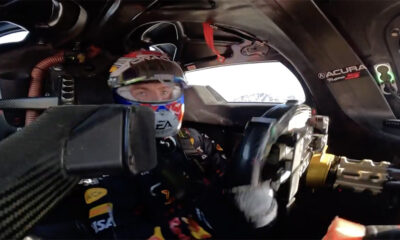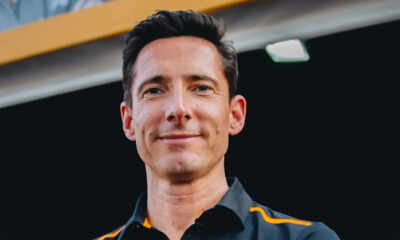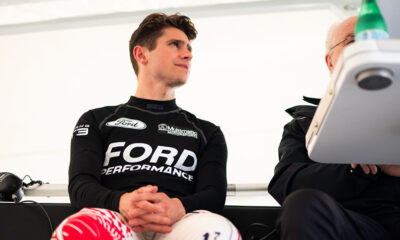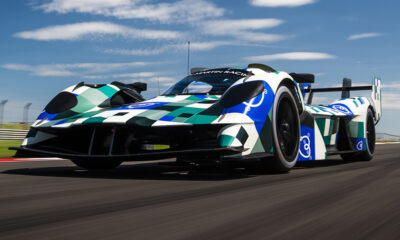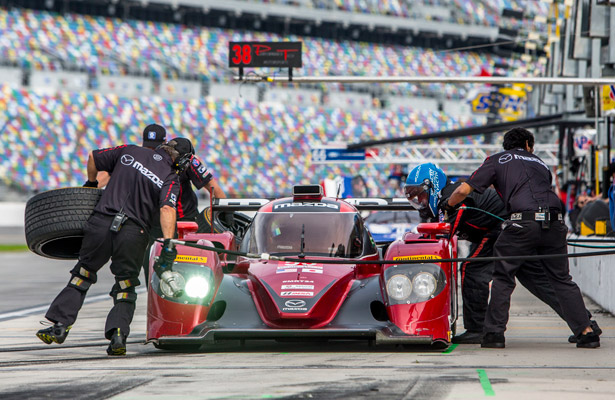
Photo: Brian Cleary/bcpix.com
This year marks a significant anniversary for Mazda – it’s been 25 years since its 787B took the checkered flag as the first and thus far only Japanese manufacturer to win overall at the 24 Hours of Le Mans.
But without a trip to Le Mans on the cards, the only 24-hour race Mazda has set this year is this week’s Rolex 24 at Daytona.
After three years of the developmental SKYACTIV-D project that brought limited tangible results, albeit successful ideas for future road cars, Mazda’s tapping some old friends in its quest to recapture old glory at the Rolex 24.
Start with its renewed engine partnership with AER, and the relaunch – officially – of the Mazda MZ-2.0T gasoline-powered engine.
It restores the relationship that brought success in Mazda’s formal LMP1 and LMP2 days with Dyson Racing, winning races and championships in the American Le Mans Series anywhere from four to seven years ago.
As John Doonan, director, Mazda Motorsports North America explained, the return to the drawing board and a heavy testing program over the last six months (more than 4,000 miles into the Roar plus another 1,000, roughly, at the Roar) has prepared Mazda for its new challenge at this year’s Rolex 24.
“(The Roar) gave everybody a good sense of confidence and momentum going into race,” Doonan told Sportscar365.
“That’s when you go back to all the miles of testing. We tested at CTMP, Road America, Sebring, Daytona, Palm Beach… we have put the miles in. We tried to break things and we haven’t yet.
“AER has done a ton of dyno runs and dyno simulations. Anything can happen. I don’t want to predict or jinx anything. But I do hope we have that choice (to race) to make Sunday around lunchtime.”
The chassis is old, too. While branded only as a Mazda Prototype, the chassis DNA dates from the Lola-Multimatic era going back five-plus years.
Compared to the newer LMP2-spec cars – particularly the Ligier JS P2 and BR Engineering BR01 – the Mazda chassis isn’t as efficient.
Still, it’s not something that Doonan, nor SpeedSource team principal Sylvain Tremblay, thinks of as too much of a detriment.
“It’s interesting when you look at our history, and going back to that 25-year anniversary of our Le Mans win,” Doonan said.
“How did we get to the 787B? That was a workhorse for about five to 10 years. The underpinnings of the 787 took time and continuous updates.
“I love the fact here, if you got back to the homologation papers I think it was a 2011 Lola or Multimatic (Lola B11/80), but this car has finished and won a lot of races in the U.S., around the globe, and at the Le Mans. It’s a proven workhorse with a lot of updates.
“This engine in this particular chassis is the first time it’s that exact package. Some newer chassis are extremely efficient. But I like our chances from our proven pieces and components.”
Tremblay added, “Part of the magic is knowing what makes this particular car work. You try to extract those things.
“Newer cars have the slight advantage. But we know what this car needs, and what it takes to be there for the last 20 laps of race. We wanted a tried and true car for developing an engine, and this is a continuation of what we’re doing.”
Tremblay, along with Tristan Nunez and Jonathan Bomarito, have done the bulk of the testing work on the new engine.
While it will be strange to not be driving this year, Tremblay admits being part of the strategic and operational team still holds his interest.
“About 25 years ago I couldn’t believe I would drive at this place, and now I’m coming here and I couldn’t believe I wasn’t going to drive it at this place,” he said. “It’s a little strange, but it’s the role that I wanted to take now.
“I drove the car quite a bit – I did most of the early testing. I’d say I’ve done many hundreds of miles. To come out for the Roar and be on point stems from us starting back in June; it wasn’t an overnight deal.”
Nunez, who’ll share the No. 55 Mazda with Bomarito and Spencer Pigot, says he’s grown from being a part of the development program both with the SKYACTIV-D efforts and now the gasoline-powered car.
“It was a tough couple years but I wouldn’t have done it any other way,” Nunez told Sportscar365. “I’ve learned so much the last three years, and it’s almost been more beneficial rather than being up front.
“When you’re learning how the car works, and learning how to be part of the program, you’re developing quite a bit. Now, it’s like I’m out of college.
“You can’t really compare the two engines. This one, you have power right at your foot and the diesel had a bit of lag.”
All three individuals – Doonan, Tremblay and Nunez – praised Pigot’s early work in his advancement from Indy Lights into the prototype, even if he’s only had limited laps.
Doonan and Tremblay also noted the No. 70 lineup of Joel Miller, Tom Long and Ben Devlin could go toe-to-toe with others.
Doonan said the core of Mazda’s six-driver lineup is a culmination of both their internal driver development programs over the last eight years, dubbed the Mazda Road to 24 in sports cars and the Mazda Road to Indy in open-wheel.
While there’s some mixed emotions with the outright lack of results for the SKYACTIV program at the Prototype level, Doonan still looks back fondly at the development process.
“All of us do feel satisfied in that program, because of the progress we made,” Doonan said.
“We did lead some laps (last year with Long driving) because we had fuel economy. But you had to have some pace… there were tears shed when we led Daytona and at Mazda Raceway, and used the efficiency of SKYACTIV to do that.
“Anytime you make a transition, it’s a bittersweet feeling. But the engines were requested by our engineering team in Japan to study them, and perhaps learn from them.
“I think that’s the biggest trophy you can get as a race program, that in some small way you helped make a next generation road car better.
“We’re onto the next chapter, but we might have done something people can learn from.”


















